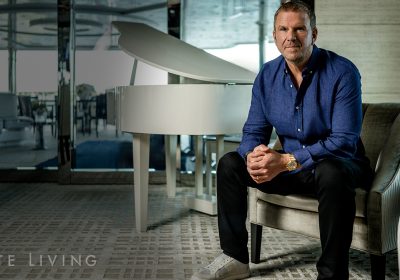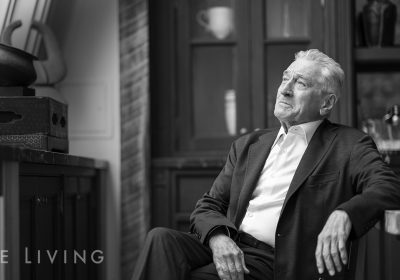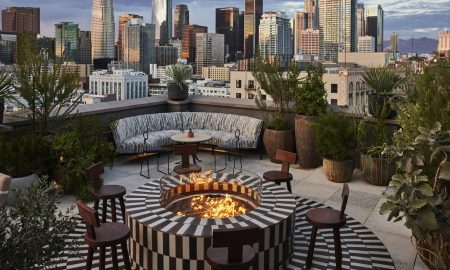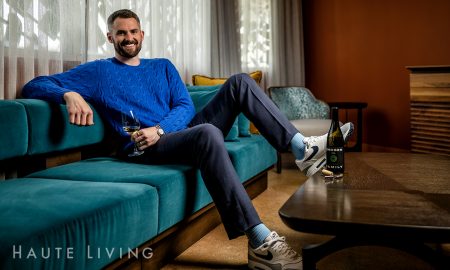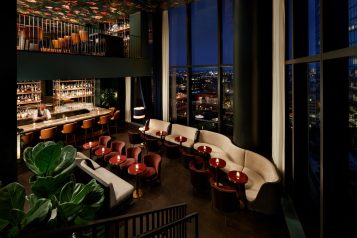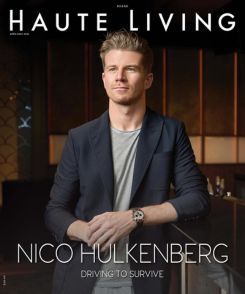New World Symphony by Frank Gehry
The new campus for the New World Symphony, designed by Pritzker Prize winner Frank Gehry, the genius behind such architectural wonders as the titanium-covered Guggenheim Museum in Bilbao, Spain, and Walt Disney Concert Hall in Los Angeles, will cement Miami-Dade’s place amongst New York and Los Angeles as a cultural capital in the U.S. The NWS’s home in the unassuming yellow Art Deco Lincoln Theatre on Lincoln Road garners little attention from visitors and locals who scamper down the strip in search of refreshments and entertainment, excluding the nights when concerts are broadcasted on the building’s exterior speakers.
Come January, the New World Symphony will have a new home that epitomizes the changing city as a whole. Ground was broken on the $200 million project in January 2008 and progressed at break-neck speed. The new campus, which stretches from behind the current NWS home on Lincoln Road to 17th Street, will feature an acoustically advanced performance hall, a 7,000-square-foot outdoor projection wall, a rooftop terrace, and an assortment of state-of-the-art rehearsal spaces.
Beyond that, the campus will feature a public park designed by Dutch landscape architecture firm West 8.
Luxury Hospitality hits the Beach: The Setai & The W South Beach
As noted in Haute Living’s Art Basel edition in 2009, to evaluate the true fruition of a city, one should look at the advancement in hospitality options. As the city grew to become a hub for the Rat Pack and their notorious glory days of debauchery, colossal hotels like the Fontainebleau opened to accommodate the elite crowd. But as the beach’s reputation deteriorated, thanks in large part to the prevalence of crime that followed the Mariel boatlift, the hospitality offerings declined as well. Then came Tony Goldman, who opened Park Central and began Miami Beach’s famed revitalization. The fashion industry followed, and the promise of glitzy possibilities prompted Ian Schrager to team up with Aby Rosen to open the Delano, which gave the model-laden population a place as chic as they were to rest their heads after reveling in the lobby bars until the wee hours. Imitators popped up in its wake, each trying to be somehow hipper than the last.
Yes, our city’s teenage years were inexplicably cool. But time stands still for no city; the pivotal turning point in the maturation of Miami Beach into adulthood was the arrival of Art Basel in 2002. Suddenly the town was on the radars of culture lovers throughout the world, gaining a prestigious reputation for something other than skin, sun, and a thriving nightlife. And so the hospitality offerings once again evolved with the changing landscape. When the Setai Hotel and Resort opened in 2004, it rose as the champion of luxury hotels at this end of Collins Avenue. Zen-like in its elegance and simplicity, this beacon of hospitality attracts those patrons looking for the very best.
In July 2009, David Edelstein and Aby Rosen’s new W South Beach opened. It’s a manifestation of all of the characteristics of the new Miami Beach—chic, sophisticated, buzzing, beachfront, and perhaps most importantly, culturally relevant. “That was our goal,” explains Edelstein, principal of TriStar Capital, which owns the hotel. “Miami Beach, being as vibrant and important as it is, both from a tourist point of view and on a cultural scale, has been given a clean slate, and we thought it was important to build something that was world-class.”
1111 Lincoln Road
At one end of the Lincoln Road strip, remnants of cheesy South Beach still lag—tacky souvenir shops, bedazzled t-shirt boutiques, club-thumping music at dining establishments, and well, bums. But on the western end of the street, a brawny parking garage is transforming the area’s retail scene into a luxury shopping and entertainment experience. Yes, a parking garage. “We don’t consider it as just a garage; it functions more like a civic destination for Miami Beach goers,” says visionary Robert S. Wennett, president of UIA Management, who has worked on numerous mixed-use projects to revitalize downtown South Norwalk, Conn., and Washington, D.C. “It’s the first building that reflects the new Miami.”
In designing the space on the corner of Alton and Lincoln Road, Wennett envisioned a more fashion-forward, grown-up Miami Beach and wanted to create the city’s own version of SoHo, Melrose or the Meatpacking District, a very chic appeal that will eventually, hopefully, trickle down to the less-endowed, neon-light district of old South Beach.
“1111 Lincoln Road is a conversion of culture, commerce and community,” Wennett says. “These new luxury-type tenants are not just selling products, they are delivering experiences to customers. It’s consistent to what’s happening with the hotels on Miami Beach—a transformation to the more cool, edgy and sophisticated.”
What can be more hip than grungy, trendy Alchemist. Located on the fifth floor of the garage, the high-end boutique boasts men’s and women’s selections of Rick Owens, Rodarte, and Chrome Hearts labels for the wannabe rock stars.
The rest of the shops on 1111 Lincoln Road are street level. MAC Cosmetics bumped up to high-end with MAC Pro and set the tone for the store with a launch party featuring nude, painted models. There’s also Journelle, a lingerie shop featuring La Perla, Stella McCartney, Elle Macpherson, and others; Nespresso, the Swiss coffee café; the Taschen bookstore designed by world-renowned Philippe Starck; Osklen, a Brazilian sportswear boutique; Y-3, an Adidas and designer Yohji Yamamoto collaboration of edgy athletic wear; ArtSee, a designer eyewear shop; Babalu, the upscale beach gift store influenced by exotic Bali and St. Barth’s; Coltorti, an Italian, multi-brand specialty shop; and Inkanta, a super-mod design store hailing from Columbia.
Of course, when patrons are not sauntering in and out of those shops, they are people watching in the cobblestone plaza or weaving through Dan Graham’s glass-and-steel sculpture Morris, named for the architect Morris Lapidus. Parched and famished consumers can feast on burgers, shakes, custards and fries at Shake Shack, a New Yorker’s favorite burger joint that opened it doors to Miamians in June. And Rosa Mexicano, an upscale Mexican eatery with a presence in Mary Brickell Village, is coming to 1111 later this year.
Finally, the ultra-modern, seven-story car park, designed by Herzog and de Meuron, is an attraction itself. People take pictures of the garage and use the industrial columns and shapes as a backdrop for photo shoots. It has also been used for a McDonald’s commercial and Ferrari ad. Its seventh floor has a 34-foot ceiling and is used for events, though a to-be-announced rooftop restaurant will be sharing the space and panoramic view soon.





